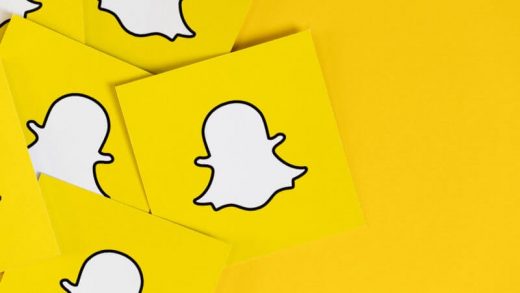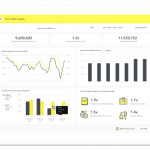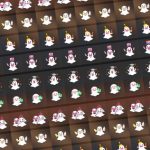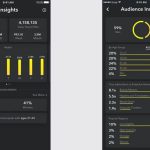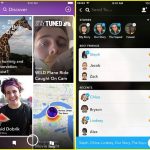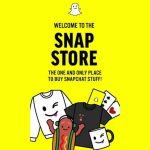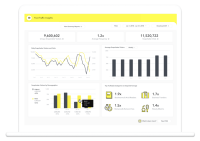Snap back: How Snapchat’s ad automation boosted its business in Q4 2017
What marketers should know from Snap’s Q4 2017 earnings report.
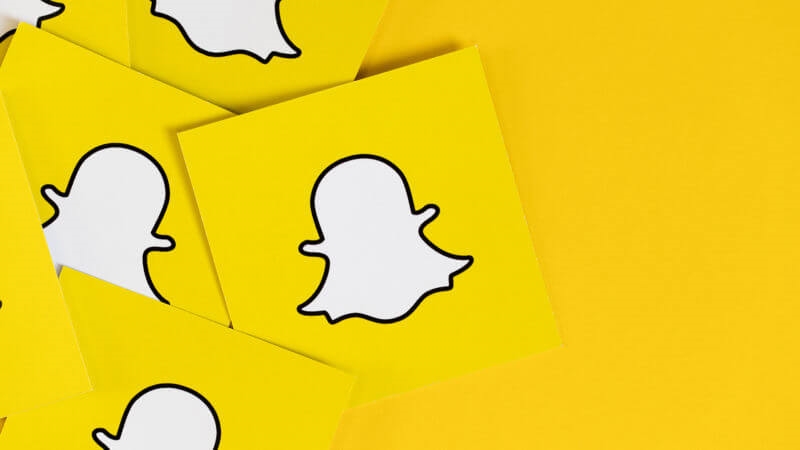
The equation is almost too simple: If Snapchat can make it easier for people to use its app, more people will use it. And if more people use it, more brands will want to buy ads on it. And if it’s easier for brands to buy ads on it, more brands will buy ads on it.
Not only is the equation simple; it’s successful. It has worked for Google and for Facebook and now for Snapchat’s parent company.
Over the past year, Snap has made its flagship app easier for people to use, removing bugs in Snapchat’s Android version and reducing its required bandwidth over cellular connections. At the same time, it has made it easier for brands to advertise to those people, rolling out automated ad-buying tools and opening up its vertical video Snap Ad format to all advertisers.
As a result, in the fourth quarter of 2017, Snapchat’s daily audience expanded by 18 percent year over year to 187 million people, and the 8.9 million new users added in the period marked the most since Q3 2016, when Facebook-owned Instagram copied Snapchat’s Stories feature. Coinciding with that reaccelerated audience growth, Snap’s advertising revenue swelled by 74 percent year over year to $281 million.
The automation of Snap’s ad business
That advertising revenue growth was fueled by advertisers’ increased adoption of the automated ad-buying tools that Snap has rolled out over the past year. Not only have Snapchat’s advertising API and self-serve Ad Manager made it easier to buy Snapchat’s Snap Ads, but they have also opened up the app’s inventory to more advertisers.
In Q4 2017, the number of advertisers programmatically buying Snap Ads doubled from the previous quarter to the point that more than 90 percent of the Snap Ads served in the period were bought programmatically. In addition to overtaking Snap Ad sales, programmatic has ignited the number of Snap Ads being sold, enabling Snap to fill more of the inventory being created by its growing audience. In Q4, the number of Snap Ads served increased by 575 percent year over year.
However, the broader availability of Snapchat’s inventory has corresponded with a reduction in the value of each ad. Because brands are now primarily buying Snap Ads in an auction environment, they can bid on that inventory at lower prices than Snap’s direct sales team might set. And they are. The average price of a Snap Ad declined by almost 70 percent year over year.
That downward pricing trend isn’t a great look, but it’s not necessarily a bad one (at least not yet). Since the lower prices for advertisers coincide with a lower barrier to entry, the dynamic makes it more likely that brands will try out advertising on Snapchat, especially small and medium-sized marketers that may not spend as much individually but can combine into a seriously pretty penny. Not only that, the more competition for Snapchat’s inventory, the more bigger brands may need to spend to reach a wide swath of people, since smaller brands are typically willing to pay more per ad to reach a smaller but more specific audience (provided Snapchat continues to prove it has enough users and ad-targeting chops for brands to reach those small, specific audience segments).
To that end, Snapchat is winning over the smaller brands. The amount of money it made from small and medium-sized advertisers more than doubled from Q3 2017 to Q4 2017.
“The engine that drove the growth in the fourth quarter and will continue to drive our growth really is the auction platform. That’s really where things are heading,” said Snap CFO Drew Vollero during the company’s earnings call on Tuesday.
Plans to automate more ads
To catalyze its future ad revenue growth, Snap plans to automate even more of its ads. For starters, it will make its newest ad format, Promoted Stories, available to self-serve advertisers “in the coming week,” said Snap Chief Strategy Officer Imran Khan on Tuesday. But the Promoted Story format isn’t the only ad unit that Snap plans to automate in hopes of replicating its Snap Ad success.
While Snap Ads generate the most revenue in total, Snapchat’s Sponsored Lenses and Sponsored Filters — collectively called its Creative Tools — rake in more money per ad. However, they can be more difficult for brands to buy, so they contribute a smaller share of Snap’s revenue. But that is changing. Last year, Snap started selling Sponsored Filters through its ad API and self-serve tool, and during the first half of this year, it will automate the sale of more of its Creative Tools formats, according to Vollero.
“We are planning for the transition of the Creative Tools business to the programmatic platform, which we believe will drive additional impressions at lower prices and result in more modest growth in the first half of 2018,” Vollero said. He didn’t specify which or whether all of Snap’s Creative Tools formats will be automated, but the Lens Studio app that Snap launched in December does make it possible for any brand to create their own Lens and those Lenses, like any other ad creative, could be uploaded to Ad Manager or through the ad API to run as a Sponsored Lens.
As with the automation of its Snap Ads, the automation of Snap’s Promoted Stories and Creative Tools formats will likely lead to more of these ads being sold, but for less money per ad. But as the automation of Snap Ads has shown, that’s not necessarily a bad thing for Snap’s ad business — assuming that Snapchat’s audience continues to grow.
Marketing Land – Internet Marketing News, Strategies & Tips
(14)

